 Ronald Aug . March 20
Ronald Aug . March 20
Copyright-free Music And Sound Effects
Adding and Editing Music and Sound Effects in YouTube Videos
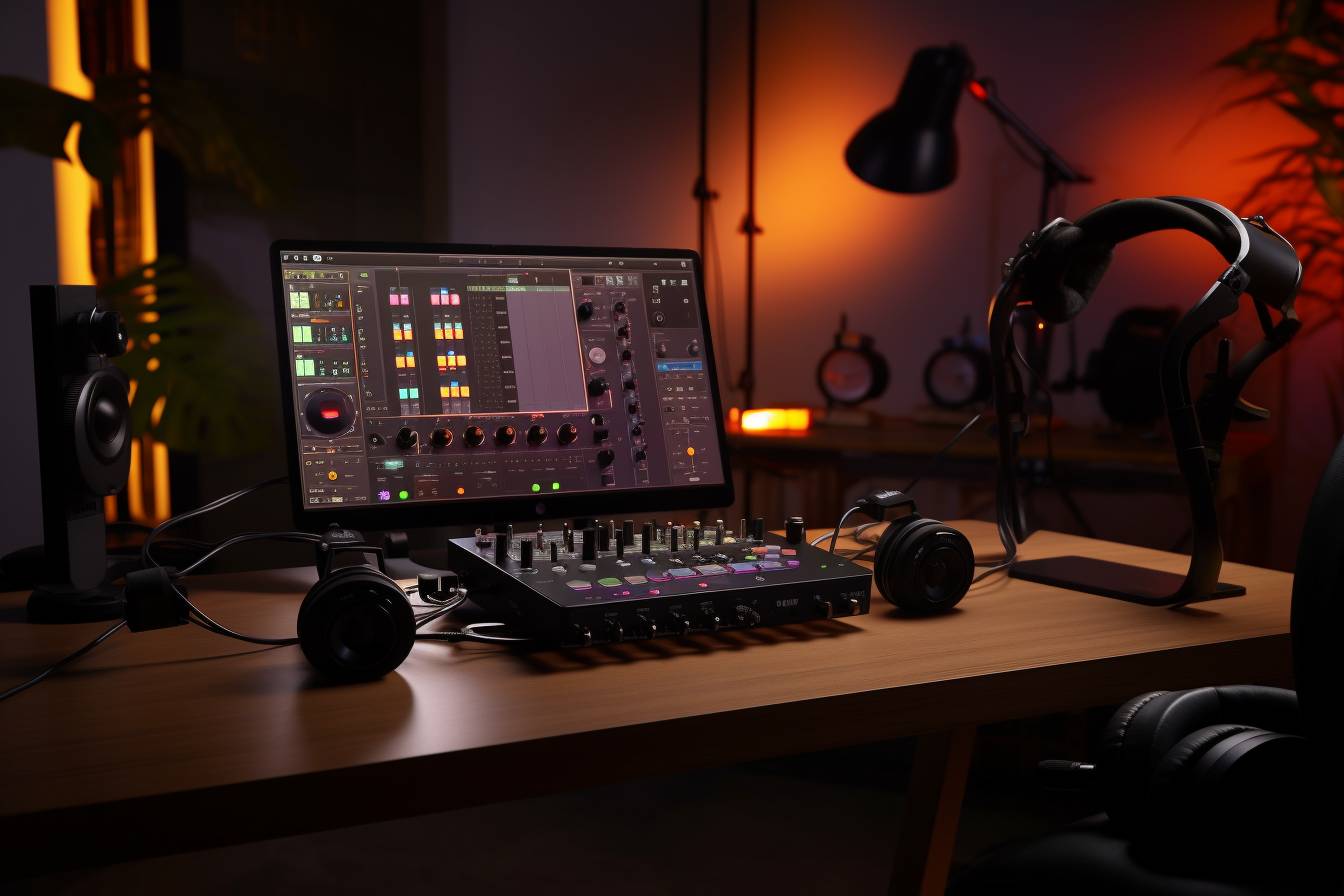

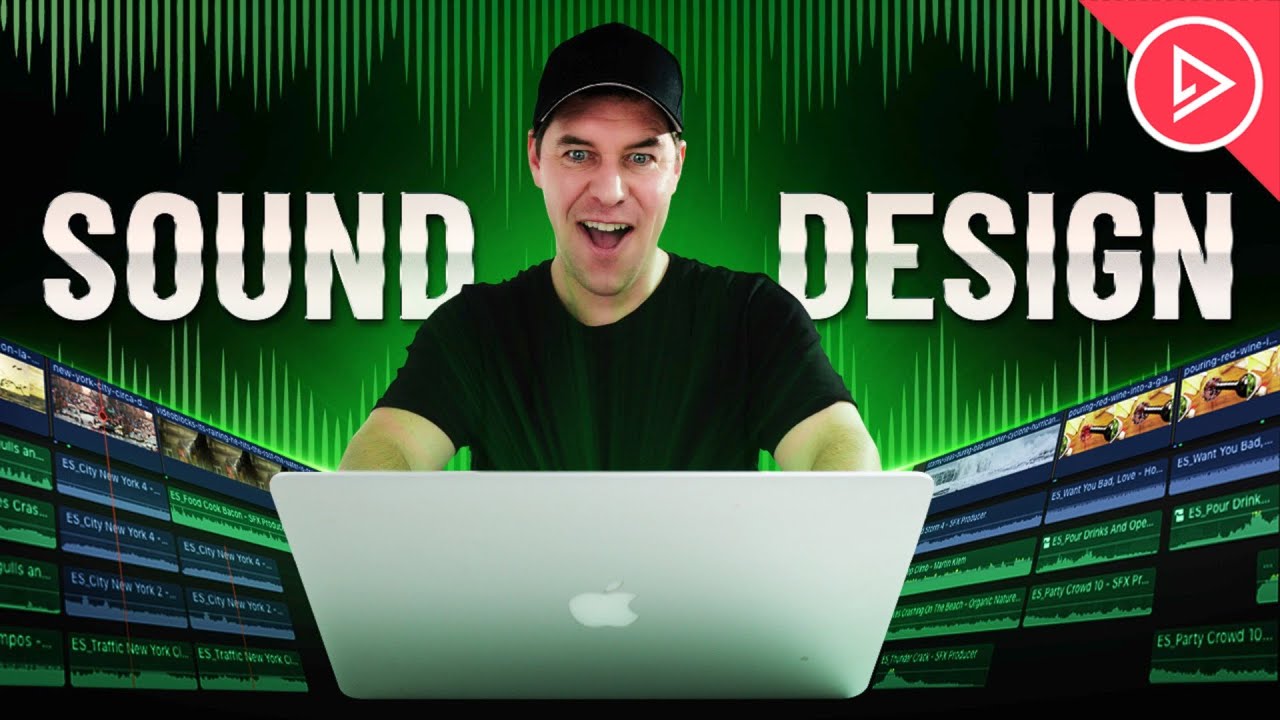 Learn Online Video
Learn Online Video
Balancing music with dialogue and other audio
Adding and Editing Music and Sound Effects in YouTube Videos
Statistics
- Viewers are more likely to watch a video to completion if the audio is properly balanced and well-edited.
- 80% of YouTube users prioritize audio quality over video quality.
Adding Music and Sound Effects
The use of music and sound effects can greatly enhance your video by setting the mood, providing context, and engaging the viewer. Consider the following tips when adding music and sound effects to your videos:
- Choose the appropriate music. Select music that fits the tone and pace of your video. Avoid using copyrighted music to prevent YouTube copyright strikes. Opt for royalty-free music from sources like YouTube's audio library and other royalty-free music providers.
- Incorporate sound effects. Enhance your scenes with sound effects, but ensure they don't disrupt the flow of your video.
- Test different audio combinations. Experiment with different music and sound effect combinations to determine what works best for your video.
Do's
- Balance audio levels. Ensure your music and sound effects don't overshadow the important dialogues and other essential audio elements.
- Adjust music volume. Lower the music volume during important dialogues or when focusing on specific sound elements.
- Use audio ducking. This technique involves automatically lowering the background music when dialogues or voiceovers are present. Many video editing software programs have this feature built-in.
Don'ts
- Use music that is too loud or overpowering. Doing so may distract viewers from your video's message and detract from the overall viewer experience.
- Ignore subtleties in audio editing. Jarring transitions, sudden silences, or abrupt changes in volume can leave your viewers feeling disconnected.
- Rely solely on automatic audio balancing tools. While these tools can be helpful, they may not always yield optimal results. Fine-tuning your audio manually is key to achieving the right balance.
- An engaging YouTube tutorial video features a voiceover explaining the steps clearly, with soft background music that complements and uplifts the viewer's experience without overpowering the voiceover.
- A dramatic scene in a short film might require sudden silence to create tension or a loud sound effect to emphasize a surprising element.
Further Resources
- How to make YouTube videos - Learn valuable techniques for creating engaging YouTube content that stands out among the competition.
- Royalty-Free Music and Sound Effects - Discover legal, copyright-free music and sound effect resources for your YouTube videos.
Balancing music with dialogue and other audio elements is a critical aspect of YouTube video creation. By following these tips and incorporating the do's and don'ts, you can effectively enhance the viewer experience and maintain audience engagement with your well-balanced audio.
Editing Sound Effects for the Best Impact
Why Sound Effects Matter
Adding sound effects can take your YouTube video to a whole new level, enhancing the viewing experience by adding depth and dimension, and making scenes more engaging and immersive. The right sound effects can create a sense of realism, set the tone for a video, and draw attention to key moments within your content. In fact, 80% of viewers are more likely to watch a video to completion if the audio quality is high .
Selecting the Best Sound Effects
When selecting sound effects, choose high-quality, royalty-free sounds that are appropriate for your video and relevant to the context. There are several resources available for finding royalty-free music and sound effects, such as creating content for YouTube. Be cautious about using copyrighted material, to avoid receiving a YouTube copyright strike.
Editing Tips for Sound Effects
-
Timing is crucial: Make sure the sound effects are synchronized with the visuals to create a seamless and natural experience for the viewer.
-
Volume consistency: Ensure the volume levels of your sound effects are consistent and balanced with the rest of your audio elements, such as dialogue and music.
-
Use a variety of sounds: Utilize a mix of different types of sound effects (e.g., ambient noise, impact sounds, and transitional sounds) to create a richer and more dynamic soundscape.
-
Less is often more: Overusing sound effects can be distracting and irritating to viewers. Use them sparingly and only when they contribute meaningfully to your content.
-
Use fades and transitions: When adding or removing sound effects, use smooth fades and transitions to avoid abrupt changes that can be jarring to your audience.
Using Audio Editing Software
There is a range of audio editing software available to help you create and edit sound effects for your YouTube videos. Some popular options include Audacity, Adobe Audition, and Logic Pro X. Choose a software that suits your needs and skill level and keep in mind that the best editing software for YouTube can vary depending on your specific requirements.
-
MKBHD: Tech reviewer Marques Brownlee uses subtle sound effects (such as keyboard sounds, clicks, and swipes) to emphasize product interactions and create a more engaging experience for his viewers.
-
Peter McKinnon: Filmmaker and photographer Peter McKinnon uses a wide range of sound effects (including ambient noise, impact sounds, and cinematic effects) to create a professional and immersive feeling in his tutorials and travel videos.
By following these tips and guidelines, you can enhance your YouTube videos with carefully chosen and edited sound effects, ultimately creating more engaging and immersive content for your viewers.
Incorporating Music Effectively
In this section, we will cover the importance of adding and editing music and sound effects in your YouTube videos and how to do it most effectively.
Why Music Matters
According to a study by Pex, 38.5% of the content on YouTube includes music. Music can help set the mood, tone, and emotion of your videos and keep viewers engaged. Whether you want to evoke a specific feeling or simply add depth to your content, selecting the right music and sound effects can make all the difference.
Choosing Copyright-Free Music and Sound Effects
When selecting music and sound effects, it is crucial to work within copyright laws to avoid potential YouTube copyright strikes. Look for royalty-free music libraries, such as the YouTube Audio Library or sources like Epidemic Sound and Artlist, which offer licenses for creators.
Choosing the Appropriate Music
When selecting music for your video, consider the following:
- Genre: Will the music match your video's content and audience?
- Tempo: Faster music can create excitement, while slower music can evoke a more relaxed mood.
- Volume: Ensure that the music does not overpower your video's dialogue or other important audio elements.
Editing and Layering Music and Sound Effects
Layering music and sound effects can greatly enhance the viewer experience. When editing, consider these tips:
- Fade in and out: Use this technique to smoothly transition between different pieces of music or sound effects.
- Volume automation: Adjust the volume of the music and sound effects over time, creating highlights and emphasis where needed.
- Equalization: Use equalization to balance frequencies and give your audio elements space to live within the mix.
For editing tips, check out this resource on how to make YouTube videos.
Tables:
| Best Practices | Considerations | Don'ts |
|---|---|---|
| Fade in and out | Ensure music is audible | Don't overpower dialogue |
| Volume automation | Balance audio elements | Don't use copyrighted music |
| Equalization | Match genre and style | Don't detract from content |
Finding the Right Balance
Finding the right balance between music, dialogue, and sound effects is vital for creating a captivating and seamless video. Experiment with different techniques and always keep your audience in mind when selecting and editing music and sound effects for your YouTube videos.
Learn more about creating content for YouTube to keep your channel fresh and engaging.
Avoiding Copyright Strikes and Issues
- Understand YouTube's Copyright Policies
- Use Royalty-Free and Licensed Material
- Attribute Sources Properly
- Master the Art of Fair Use
- Use YouTube's Tools
- Don'ts
- Monitor Your Channel Regularly
- Disputing false copyright claims
- Importance of Clearing Music Rights
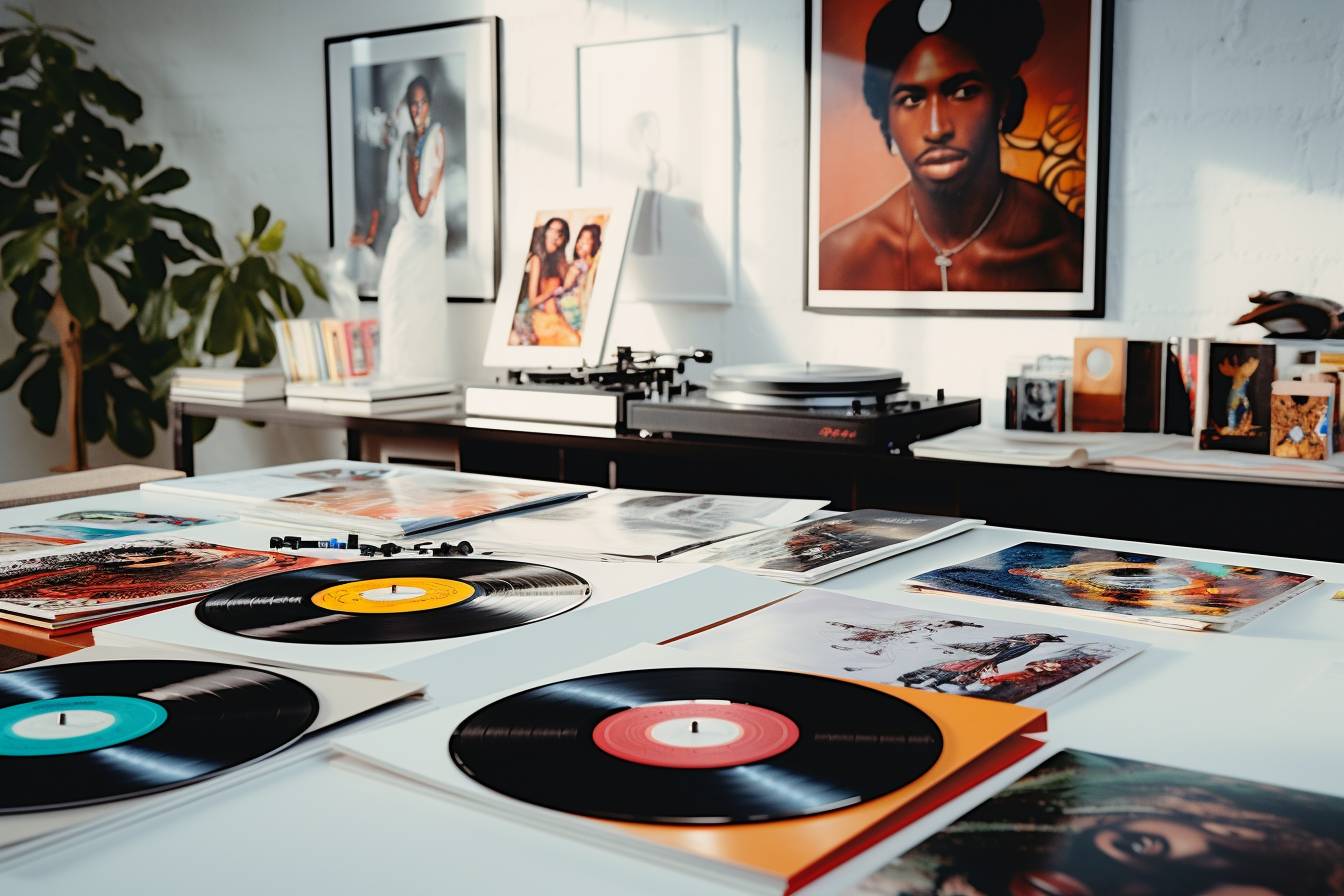

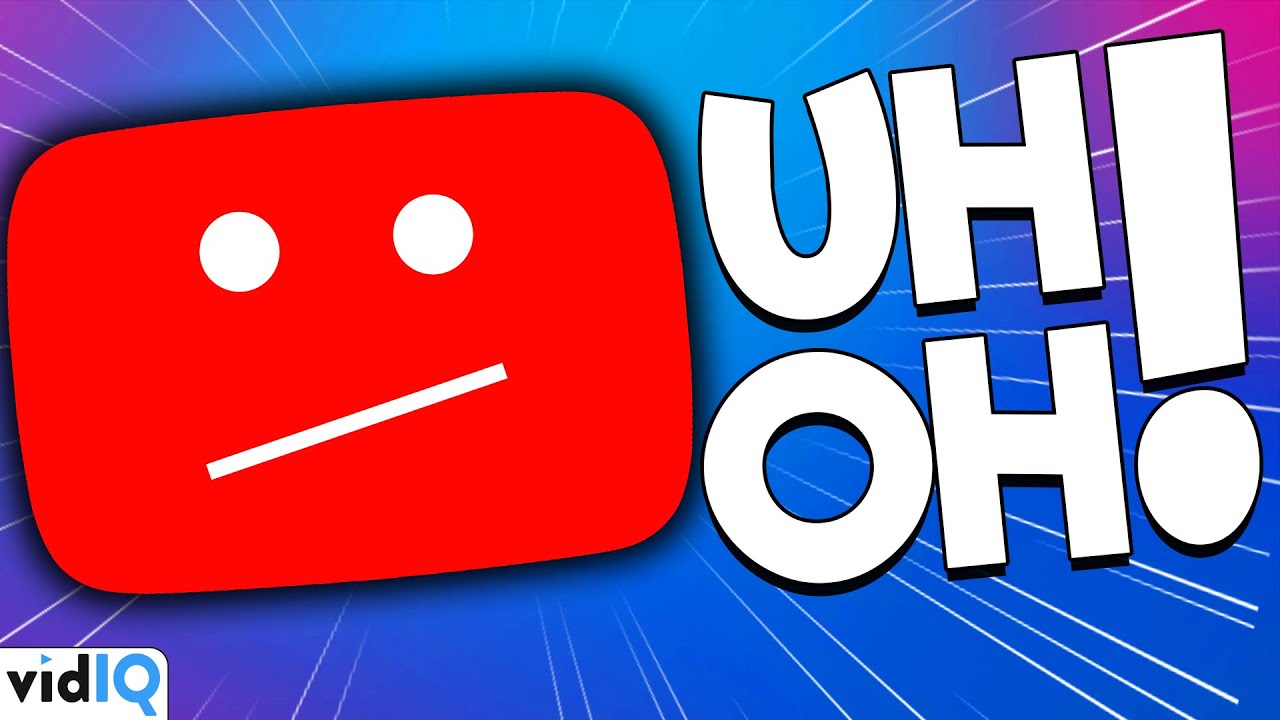 vidIQ
vidIQ
Best Practices to Stay in Compliance with YouTube Policies
In this section, we will explore the best practices to avoid copyright strikes and stay in compliance with YouTube policies.
Understand YouTube's Copyright Policies
Familiarize yourself with YouTube's copyright policies - it is crucial to avoid any issues. Understand the rules around YouTube copyright strikes and be mindful of copyright infringement when uploading content.
Use Royalty-Free and Licensed Material
To avoid copyright issues, use royalty-free or licensed music, sound effects, images, and video clips in your content.
Music and Sound Effects
Several sources offer royalty-free or licensed music and sound effects for YouTube creators. Check this list for some of the best resources available.
Stock Footage and Resources
Using stock footage can help enhance your video content without copyright issues. Some excellent resources for free and paid stock footage are listed here.
Attribute Sources Properly
When using copyrighted material with permission or under fair use, always credit the original creator in your video description.
Master the Art of Fair Use
Fair use is a legal doctrine that allows transformative use of copyrighted material, such as commentary, parody, or educational purposes. Learn how to apply this concept properly to avoid copyright issues.
Use YouTube's Tools
YouTube provides various tools to help you avoid copyright issues:
- Copyright Match Tool: It identifies copyright violations and allows you to address them.
- Content ID: A system that helps rights holders control their copyrighted content on YouTube.
- Audio Library: Provides royalty-free music and sound effects for your videos.
Don'ts
- Don't use copyrighted material without permission from the original creator.
- Don't assume that crediting the original creator will protect you from copyright infringement claims.
- Don't ignore copyright claims or strikes – deal with them promptly.
Monitor Your Channel Regularly
Regularly monitor your channel and analytics to identify any potential copyright issues. Address strikes or claims quickly to minimize their impact on your channel.
Following these best practices will help you stay in compliance with YouTube policies and avoid copyright strikes and issues. Keep up to date with YouTube's policies, copyright laws, and platform updates to ensure that your channel continues to thrive. To learn more about creating successful YouTube content, check this guide on how to make YouTube videos.
Avoiding Copyright Strikes and Issues
Disputing false copyright claims
In this era of digital content creation, false copyright claims on YouTube have become a common occurrence leading to many discussions on YouTube creator news forums.
An alarming statistic is that around 700,000 copyright claims were submitted every week in 2018 on YouTube . Many of these claims were authentic, but a significant portion were false copyright claims, often due to a lack of understanding of copyright laws or even intentionally by malicious individuals.
A false copyright claim occurs when a party that does not own the copyright to a specific piece of content files a claim or a strike against your video. This may result in your video being taken down or monetized revenue being redirected to the claimant.
How to Dispute False Copyright Claims
-
Gather evidence: If you believe you have received a false copyright claim, the first step is to gather evidence supporting your position. This may include proof of ownership or licenses, or proof that your use of the content falls under fair use.
-
Review YouTube's Copyright policies: Before disputing a false claim, it is essential to familiarize yourself with YouTube's copyright policies and ensure that your video complies with the guidelines.
-
Dispute the claim: To dispute a claim, follow the steps provided in YouTube's copyright disputes process.
-
Wait for the resolution: YouTube typically allows the claimant 30 days to review and respond to your dispute. They may release the claim, maintain the claim, or escalate it to a legal dispute.
Do's
- Understand and abide by YouTube's copyright policies.
- Use content under fair use or with proper licenses and permissions.
- Keep records and documentation regarding your content to support your dispute, such as licenses and agreements.
- Be patient and follow the process, as the resolution may take time.
Don'ts
- Do not file false counter-notifications as it may result in the termination of your channel.
- Do not intentionally infringe upon others' copyrights.
- Avoid using copyrighted content without obtaining proper permissions or licenses.
- Refrain from engaging in inflammatory or threatening communication with the claimant.
Disputing false copyright claims can be a challenging process, but by being informed and prepared, you can protect your content and revenue. Make sure to stay updated on copyright laws and regulations by subscribing to YouTube newsletters and be diligent in ensuring your content is compliant with YouTube's policies.
Avoiding Copyright Strikes and Issues
Double-checking Music Usage Rights
As a YouTube content creator, understanding and respecting music usage rights is essential to avoid copyright strikes and issues on your channel. In this section, we'll explore the steps to double-check music usage rights and safeguard your content for successful monetization.
- According to a study conducted by Lumen, music-related copyright complaints account for 34.12% of the total complaints on YouTube.
- A survey by IFPI found that 47% of the time spent listening to on-demand music is on YouTube.
Importance of Clearing Music Rights
- Avoiding copyright strikes: Failure to properly obtain music usage rights can result in copyright strikes on your channel. Accumulating multiple strikes can lead to your account being suspended or terminated.
- Monetization: YouTube requires creators to comply with its monetization policies, which include adhering to copyright laws. Violating these policies can limit or prevent you from monetizing your content.
- Reputation: Respecting intellectual property not only helps you avoid legal issues but also builds your reputation as a responsible content creator.
Double-checking Music Usage Rights
Research the Copyright Status
When using music in your videos, first determine the copyright status of the song or audio clip. You can do this by:
- Visiting the U.S. Copyright Office website to search for registered works
- Checking if the song has Creative Commons Licensing (CCL) or Public Domain status
Obtain Necessary Licenses
To legally use copyrighted music, you must obtain the necessary licenses from the copyright holder(s). This typically includes:
- Master rights: Rights to use the original recording (usually controlled by the record label)
- Synchronization rights: Rights to use the composition in conjunction with video content (usually controlled by the publisher)
Utilize Royalty-free Music Libraries
If obtaining licenses seems daunting, consider using royalty-free or copyright-free music sources for your videos. Some popular libraries include:
Ensure you fulfill any attribution requirements stated by these libraries.
Monitor Your Video's Copyright Status
When you upload a video, YouTube scans your content using its Content ID system to detect copyrighted material. If it finds a match, it may place a copyright claim on your video. Keep an eye on your Video Copyright Info page for potential claims or disputes.
| Do's | Don'ts |
|---|---|
| DO research the copyright status of the music you use | DON'T assume a song is free to use without verification |
| DO obtain necessary licenses before using copyrighted music | DON'T use copyrighted music without permission |
| DO utilize royalty-free or copyright-free music libraries | DON'T ignore attribution requirements for music sources |
| DO monitor your video's copyright status post-upload | DON'T disregard copyright claims on your videos |
By double-checking music usage rights and respecting intellectual property, you can avoid copyright strikes and issues on your YouTube channel. This not only increases the potential for monetization but also boosts your credibility as a responsible content creator. To learn more about YouTube's copyright laws, check out our guide on Understanding and Adhering to Copyright Laws.
Creating Your Own Music and Sound Effects for YouTube Videos
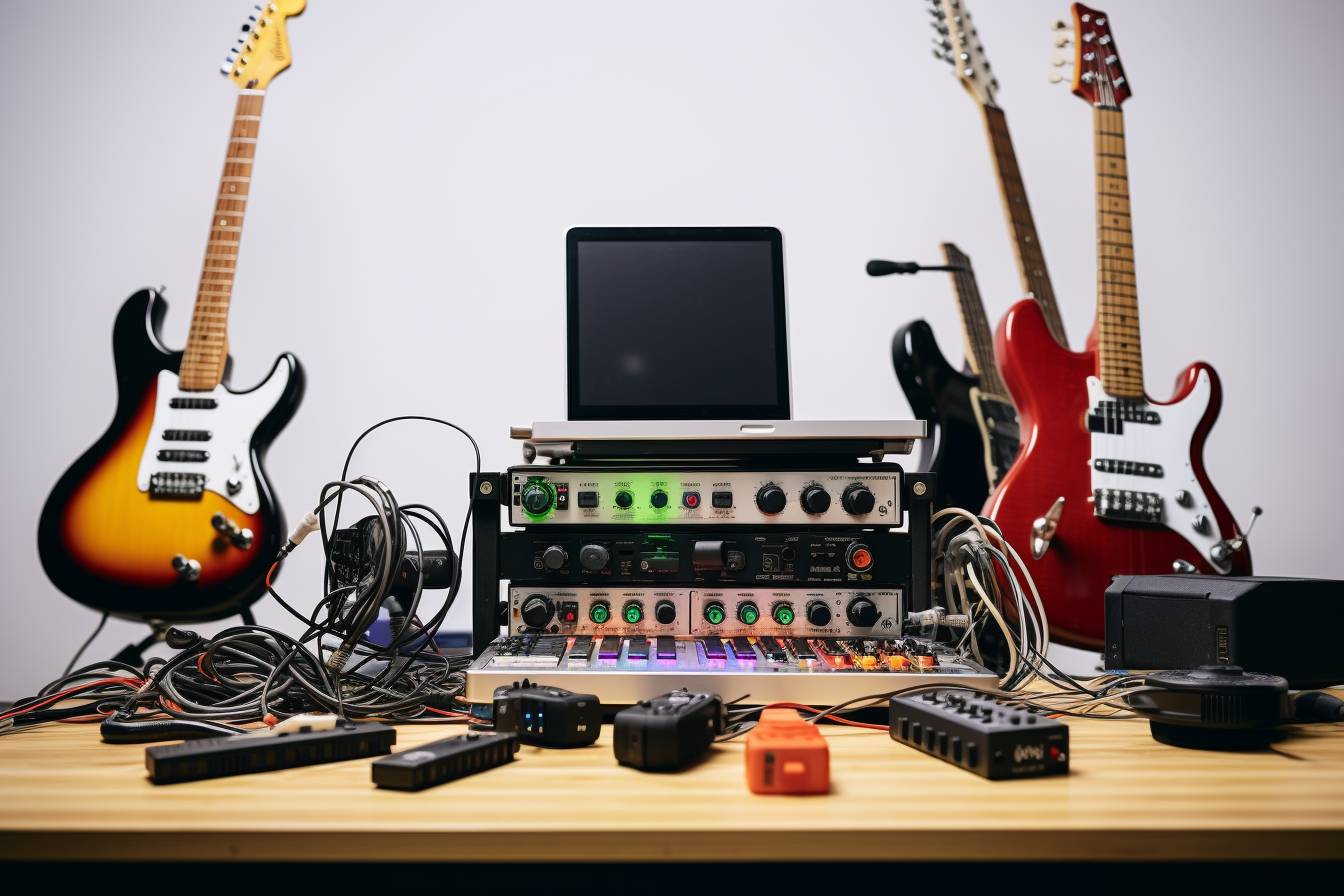

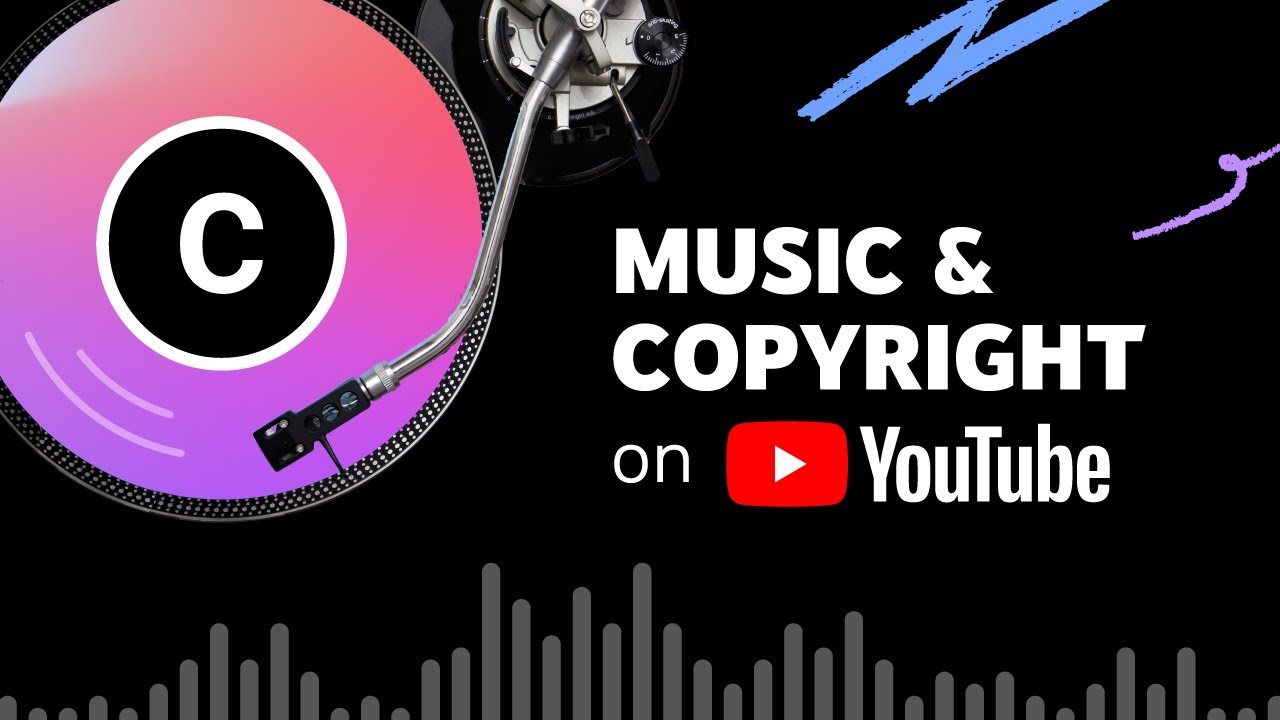 YouTube Creators
YouTube Creators
Creating Your Own Music and Sound Effects for YouTube Videos
Collaborating with musicians and sound designers
Creating unique and appealing music or sound effects for your YouTube videos can be a challenging task, especially for creators with limited music production capabilities. Collaborating with musicians and sound designers can help enhance your content, engage your audience, and elevate your video production quality. This section discusses the benefits of collaborating with musicians and sound designers, how to find the right collaborators, and tips for successful collaborations.
- Originality: Working with musicians and sound designers can provide your YouTube videos with a fresh and unique audio experience, reducing the chances of using the same sounds as other creators.
- Improved production quality: Seasoned musicians and sound designers can offer professional-quality audio elements that can enhance your video production.
- Time and effort savings: By delegating the music and sound production to professionals, you can focus more on other aspects of your video production, such as scripting, shooting, and editing.
- Audience engagement: Creative and appealing audio elements may increase audience retention rates, boosting your video's performance in YouTube's algorithm.
Finding musicians and sound designers for collaborations
- Search YouTube for creators: Look for talented musicians and sound designers on YouTube who are open to collaborations or have experience working with other creators. Use relevant keywords, such as "musician for hire" or "sound designer for YouTube."
- Use online platforms: Websites such as SoundCloud, Bandcamp, and Mandy.com can help you find suitable musicians and sound designers for your videos.
- Attend events and conferences: Networking at industry events and conferences can help you connect with potential collaborators and build relationships.
- Leverage social media: Utilize platforms like Twitter, Instagram, and Facebook to find and connect with musicians and sound designers who are interested in collaborating with YouTubers.
- Reach out to your network: Ask friends, family, and fellow creators for recommendations or introductions to suitable musicians and sound designers.
Tips for successful collaborations with musicians and sound designers
- Be clear about your needs and expectations: Provide specific details regarding the type of music or sound you want for your video and discuss any creative constraints, deadlines, and budget.
- Establish a contract: Draft a written agreement outlining the terms of the collaboration, including payment, ownership, and usage rights. This can help prevent potential disputes and misunderstandings.
- Communicate effectively: Maintain open and honest communication with your collaborators throughout the project, provide constructive feedback, and work together to resolve any issues that may arise.
- Acknowledge and promote your collaborators: Credit your collaborators in your video's description and share their work on your social media channels to show appreciation for their contributions and help them gain visibility.
- Be respectful of copyright laws: Ensure that the music and sound effects you use in your videos do not infringe on any copyright laws. Work with your collaborators to create original content or to obtain the appropriate licenses for any samples or tracks used in your project. For more information on copyright laws, refer to this guide on YouTube copyright.
Collaborating with musicians and sound designers can greatly improve the quality and appeal of your YouTube videos. By following these guidelines and investing time in building strong relationships with creative partners, you can enhance your video production, grow your channel, and reach a wider audience.
For further reading on creating content for YouTube, check out this guide on developing a content strategy and schedule.
Creating Your Own Music and Sound Effects for YouTube Videos
DIY music production tools and software
Creating your own music and sound effects for YouTube videos can greatly enhance your content, making it more engaging for viewers. With the rise of DIY music production, many tools and software programs are available to help you create professional-sounding audio elements, even if you are a beginner. In this section, we will explore various DIY music production tools and software that can elevate your YouTube content to the next level.
The importance of music and sound effects in YouTube videos
Music and sound effects can make a significant impact on the overall success of a YouTube video. They can help to:
- Create an emotional connection with viewers.
- Increase engagement by making the video more entertaining.
- Enhance the video's professionalism and polish.
Top DIY music production tools and software
Here are some popular DIY music production tools and software programs that can help you create your own music and sound effects for YouTube videos:
-
GarageBand (Free) - GarageBand is an extensive, easy-to-use digital audio workstation (DAW) that is available for free on macOS and iOS devices. With a wide range of customizable synths, loops, and virtual instruments, GarageBand is an excellent tool for beginners looking to create their own music for YouTube videos.
-
FL Studio (Paid) - FL Studio is a comprehensive DAW that is popular among both beginners and professional music producers. With a wide array of virtual instruments, plugins, and samples, FL Studio is a powerful tool for creating custom music and sound effects.
-
Ableton Live (Paid) - Ableton Live is another popular DAW favored by professional music producers. With its unique, non-linear workflow and a wide range of built-in instruments and effects, Ableton Live is an excellent option for those looking to create more complex and experimental music for their YouTube videos.
-
Audacity (Free) - Audacity is a free, open-source audio editor that allows users to record, edit, and process audio files. While it may not be as feature-rich as some other DAWs, Audacity is a great option for those on a budget or those who only need a simple tool to create basic sound effects.
-
Logic Pro X (Paid) - Logic Pro X is a professional DAW available exclusively for macOS users. With its intuitive interface and extensive collection of plugins and sounds, Logic Pro X is a great choice for those looking for a more advanced music production software.
Do:
- Experiment with different instruments, sounds, and effects when creating your music. This can help you discover your unique style and sound for your YouTube videos.
- Consider the mood and tone you want your music and sound effects to convey. This can help create a more cohesive and engaging experience for your viewers.
- Learn the basics of audio editing and mixing to create polished and professional-sounding tracks.
- License any copyrighted material used in your videos to avoid YouTube copyright strikes .
Don't:
- Don't rely solely on premade loops and samples. Instead, try creating your own melodies, chord progressions, and sound effects to give your music a more unique and personalized feel.
- Don't ignore the importance of audio quality. Invest in a high-quality microphone or audio interface to ensure the best sound quality for your recordings.
- Don't forget to consider the volume levels of your music and sound effects for your YouTube videos. Make sure they do not overpower or distract from your voice or other elements of your video.
Creating your own music and sound effects for your YouTube videos can greatly enhance your content, making it more engaging and professional-sounding. With a wide range of DIY music production tools and software programs available, anyone can create high-quality audio elements for their YouTube channel.
However, learning how to make YouTube videos themselves is also crucial to creating engaging content for your viewers. Check out our guide on how to make YouTube videos to help you become a successful YouTuber.
Creating Your Own Music and Sound Effects for YouTube Videos
Tips for creating effective sound effects from scratch
Creating sound effects from scratch can elevate the production value of your YouTube videos. Sound effects make your content more engaging, as they help to create a more immersive experience for viewers. In this section, we will explore some tips and techniques for creating effective sound effects from scratch.
** Use high-quality recording equipment**
To create sound effects that are clean and professional, invest in a good-quality microphone. This will help to capture the nuances of the sounds you record. A high-quality microphone, like the Rode NT1-A, can be a great choice for capturing a wide range of sounds with clarity and detail.
** Record in a controlled environment**
When recording sound effects, aim to minimize any background noise. This can be achieved by recording in a quiet environment with minimal ambient sounds. Additionally, use a foam windscreen or pop filter to prevent plosive sounds and wind noise.
** Experiment with different objects and techniques**
Creating unique sound effects often requires experimentation. Use everyday objects to create interesting sounds, such as tapping a wooden spoon on a plastic container or crumpling paper. Explore unconventional methods of creating sounds, such as manipulating objects underwater or using synthesizers.
** Layer and manipulate sounds**
When creating sound effects, it can be helpful to layer multiple sounds and use audio editing software to manipulate them. This can create a more complex and dynamic effect. You can adjust pitch, add reverb, and apply other audio filters to enhance your sound effects.
** Organize and label your sounds**
As you create a library of sound effects, it is important to stay organized. Properly label your sound files, detailing what the sound is and any editing that has been done. This will make it easier to find and implement the perfect sound effect in your YouTube videos.
** Use reference materials**
** Don't forget copyright laws**
When using sound effects in your YouTube videos, it is essential to adhere to copyright laws. By creating your own sound effects, you can avoid any potential violations and maintain full ownership of your content. For more on understanding and adhering to copyright laws, check out our section on YouTube copyright laws.
-
Do: Record sounds at a high sample rate and bit depth for maximum quality.
-
Do: Make sure to isolate the sound you are recording from any ambient noise.
-
Do: Be inventive and look for interesting objects and techniques to create unique sounds.
-
Do: Use audio editing software to manipulate and enhance your sounds.
-
Don't: Rely solely on stock sound effects – create your own to stand out from the crowd.
-
Don't: Ignore the importance of sound design in elevating the quality of your YouTube videos.
-
Don't: Forget to properly organize and label your sound files.
By following these tips and techniques, you can create captivating and effective sound effects to elevate your YouTube videos. As you continue to learn how to make YouTube videos, incorporating custom sound effects will help improve the production value and engage your audience.
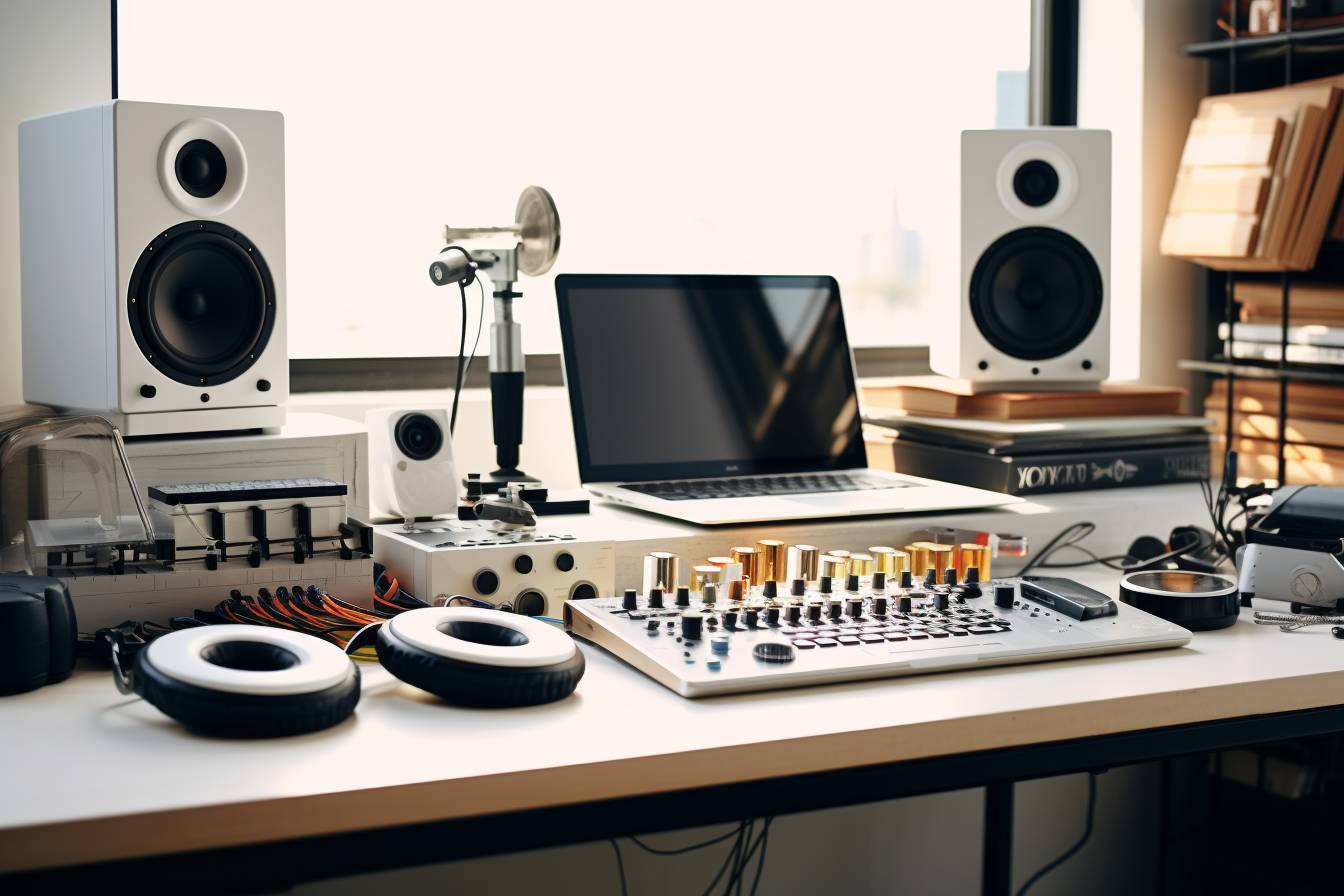
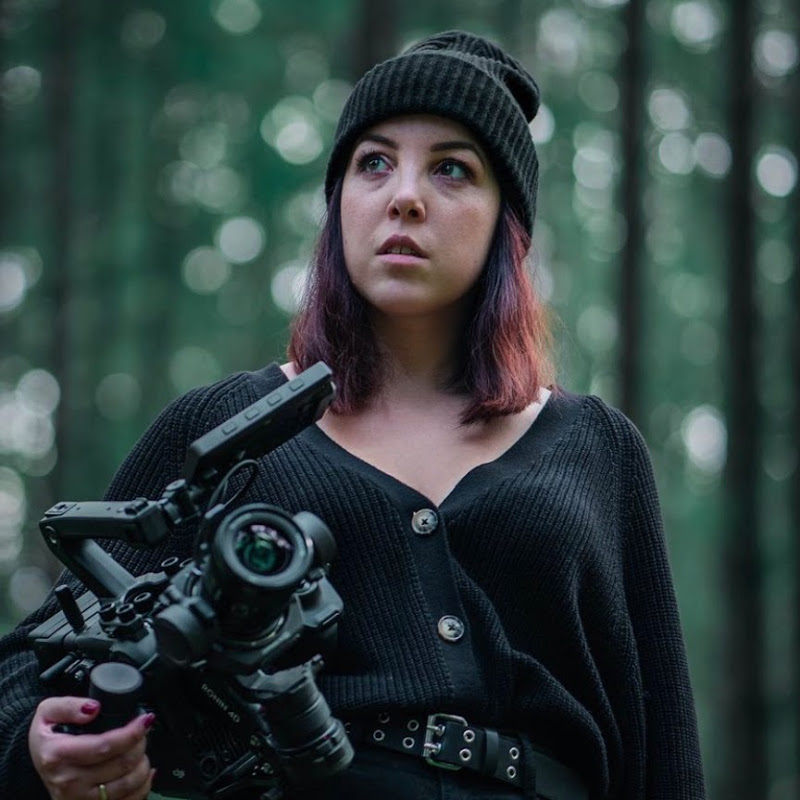
 Lila
Lila
Importance of using copyright-free music and sound effects
The use of copyright-free music and sound effects is crucial for YouTube creators to ensure their videos are legally compliant and to avoid potential copyright strikes. In this section, we will discuss the benefits of using copyright-free music and sound effects, how to find these resources, and some best practices for their use in your YouTube videos.
-
Avoid Copyright Strikes: Incorporating copyrighted music without permission can lead to a YouTube copyright strike, which can negatively impact your channel by potentially leading to demonetization or even suspension. Utilizing copyright-free music and sound effects ensures that your content remains legally compliant and free from these risks.
-
Monetization Opportunities: Using royalty-free music allows you to monetize your videos without concerns of revenue being redirected to copyright holders or facing demonetization due to copyright issues.
-
Creative Freedom: With an extensive library of copyright-free music and sound effects, you will have access to a wide variety of audio resources to enhance the creativity and professionalism of your videos.
Finding Copyright-free Music and Sound Effects
There are numerous resources available for YouTube creators to find and download copyright-free music and sound effects, including but not limited to:
- YouTube Audio Library
- SoundCloud
- Free Music Archive
- Incompetech
- Bensound
Do's and Don'ts for using Copyright-free Music and Sound Effects:
Do:
- Always verify the license type and any attribution requirements to ensure legal use.
- Listen carefully to the quality and suitability of the audio before using it in your videos.
- When required, provide proper credit to the creator or source of the music and sound effects used in your video.
- Keep a record of the licenses and sources of the music and sound effects you use in case any disputes arise in the future.
Don't:
- Assume that all music and sound effects available online are copyright-free or free to use without proper licensing.
- Use copyrighted music without obtaining proper permission or licensing, even if you modify or remix the original audio.
- Use audio that is too loud, distracting, or unrelated to the content of your video, as it can negatively impact your viewer's experience.
To further improve the quality and professionalism of your videos, consider exploring the resources provided in our guide on how to make YouTube videos.
What is copyright?
Copyright is a legal protection given to the creators of original works, including music, sound effects, and other creative content. This exclusive right allows creators to control the use and distribution of their content for a limited period. Unauthorized use can lead to legal consequences like a YouTube copyright strike.
Why is royalty-free music important for YouTube creators?
Using copyrighted music and sound effects without permission can create problems for YouTube creators. YouTube has strict rules and algorithms to detect content that violates copyright laws. When detected, YouTube can remove the video, or monetization can be disabled for that video.
Royalty-free music is an alternative to using copyrighted music. This type of music allows creators to use the content without worrying about copyright infringements, as long as they abide by the specific licensing terms provided by the music creator.
How to find royalty-free music?
There are various platforms and websites that provide royalty-free music for YouTube creators:
- YouTube Audio Library: YouTube offers a vast collection of copyright-free music and sound effects for creators to use in their videos.
- Websites: Websites like Incompetech, Purple Planet, and Bensound offer a variety of royalty-free music, often categorized by genre and mood.
- Subscription services: Platforms like Epidemic Sound and Artlist offer paid subscriptions to access extensive libraries of copyrighted music that is licensed for YouTube use.
Do
- Always check the licensing terms of the music you are using in your video. Each royalty-free music platform may have its own rules and conditions for using their content.
- Give proper credit to the music creator when required. This usually includes mentioning the creator's name and providing a link to their website or the source of the music.
- Check for updates in the licensing terms, as the rules can change over time.
- Use high-quality audio files to ensure the best listening experience for your audience.
Don't
- Assume that because a music is marked as "royalty-free" that you can use it without any restrictions or limitations. Always check the terms and conditions.
- Use copyrighted music without permission, as it can lead to legal issues and possible removal of your video.
- Ignore attribution requirements, as it can lead to potential copyright issues.
Types of licenses
There are different types of licenses that can be associated with copyright-free music, such as:
- Creative Commons: This is a license that allows creators to use music for free, as long as they give proper attribution to the original creator.
- Public Domain: Works in the public domain are those whose copyright has expired or has been waived by the creator. Using music from the public domain is free and does not require attribution.
- Royalty-Free License: This type of license allows creators to use the music for a one-time fee. After purchasing the license, no further royalties or fees are required.
Rules and Guidelines for using Copyright-free Music and Sound Effects
- Why Attribution Matters
- Types of Attribution
- How to Add Attribution to YouTube Videos
- Licensing and usage rights
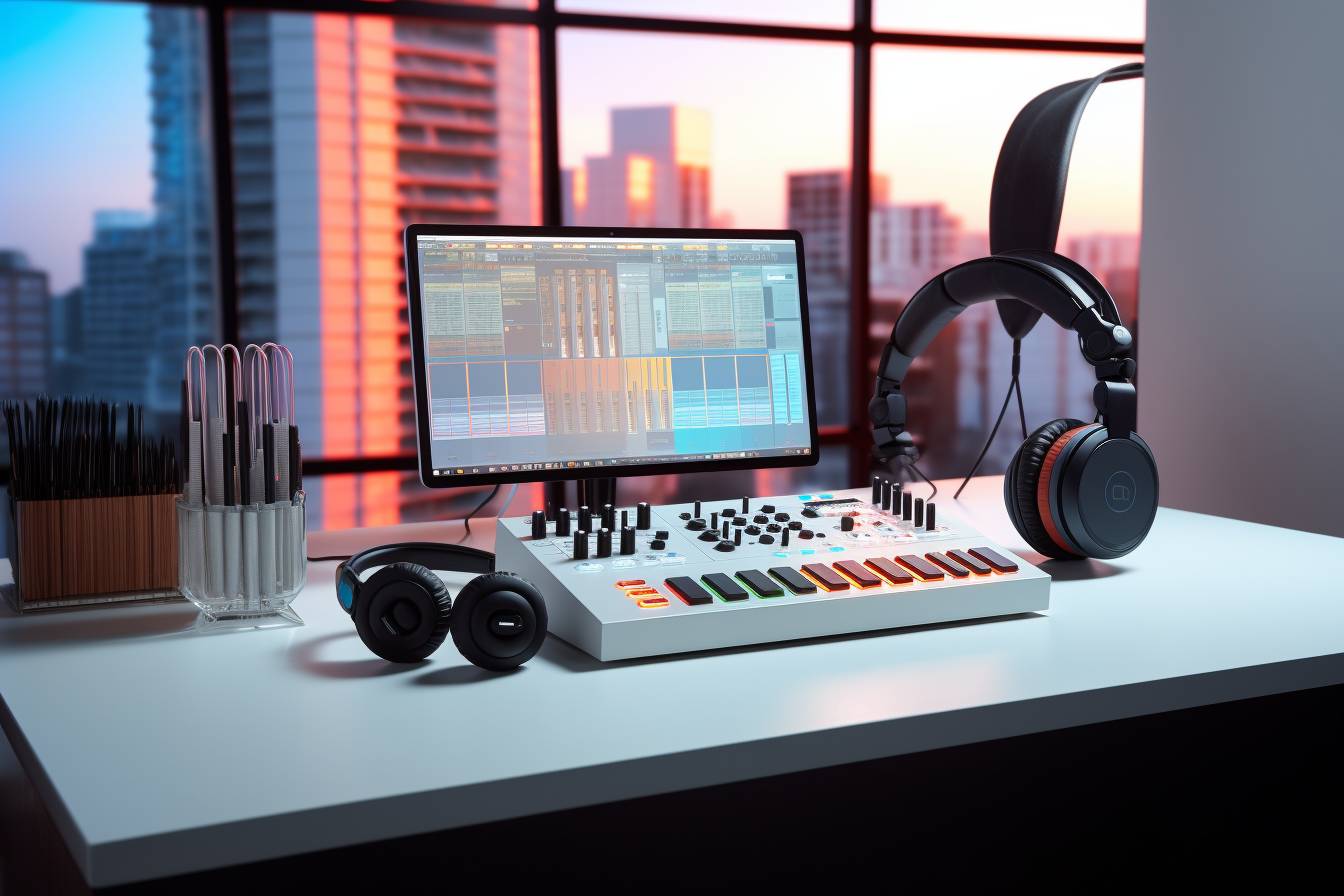

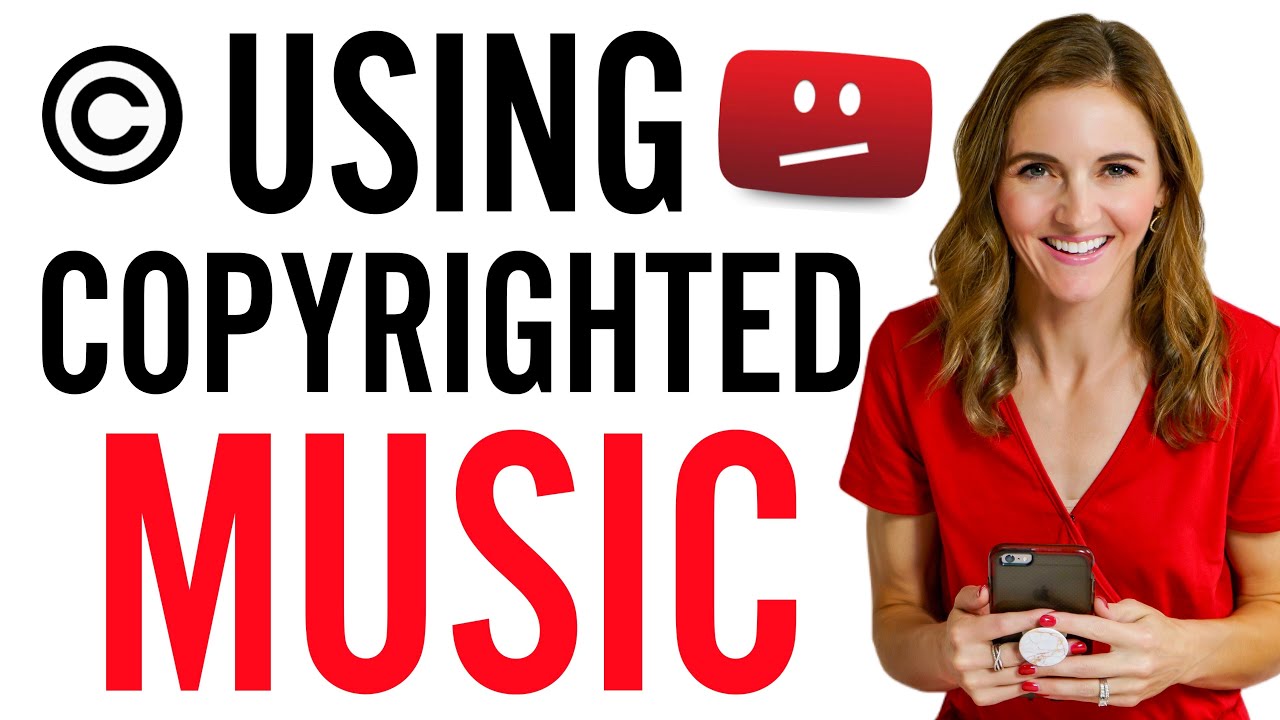 YouTube How To Guide - Andrea Jean
YouTube How To Guide - Andrea Jean
Attribution Requirements
As a YouTube creator, using copyright-free music and sound effects is essential to avoid copyright strikes and monetization issues. However, to legally use royalty-free assets, you must adhere to specific attribution requirements. This article delves into the guidelines, do's, and don'ts of using copyright-free music and sound effects on YouTube.
Why Attribution Matters
Attribution is the process of giving credit to the creators of music or sound effect assets you use in your videos. This acknowledgment helps the original creator gain recognition and prevents infringement claims from arising. Moreover, attribution is often a mandatory requirement under Creative Commons licenses in the copyright-free domain.
Types of Attribution
There are several types of attribution requirements, depending on the source and licensing of the music or sound effect:
-
Creative Commons: Most Creative Commons licenses (CC BY, CC BY-SA, CC BY-ND) mandate attribution to the original creator. The licensee must credit the creator, provide a link to the license, and specify if any changes were made.
-
Public Domain: Works in the public domain do not require attribution, as the copyright has expired or never existed. However, creators are encouraged to credit the source for transparency.
-
Royalty-Free Libraries: Various online libraries offer royalty-free music and sound effects with different attribution requirements. For instance, some require no attribution, while others mandate a specific format or credit placement in the video.
-
Simple Attribution: "Song Title by Artist Name" or "Sound Effect Title by Creator Name."
-
Detailed Attribution (Creative Commons): "Song Title by Artist Name (https://creativecommons.org/licenses/by/4.0/)" – this format includes the link to the license and any extra information, such as whether changes were made to the original work.
How to Add Attribution to YouTube Videos
-
Video Description: Provide credit to the creator and a link to the source (if required) in the video description. Proper formatting and placement are essential to avoid copyright claims and legal issues.
-
Video End Screen: Include the attribution information in the video's end screen or credits. Although not mandatory, many content creators follow this practice to give clear credit during the video transmission.
-
Do: Provide correct and complete attribution in your videos, following specific licensing stipulations.
-
Do: Check and follow the rules of the royalty-free library you use for music and sound effect assets. Licensing terms vary and evolve over time.
-
Do: Keep track of every asset you use and its attribution information for easy reference when editing or facing copyright claims.
-
Don't: Assume that all copyright-free music and sound effects have the same attribution requirements.
-
Don't: Use inadequate or incomplete attribution, as this may result in copyright claims or legal issues.
-
Don't: Claim copyright-free music or sound effects as your creation. Doing so is unethical and can lead to repercussions.
For Commercial and Non-Commercial Use
When using copyright-free music and sound effects on YouTube, it's essential to understand the rules and guidelines, especially when it comes to commercial and non-commercial use. The following information will give you an in-depth understanding of the dos, don'ts, and best practices associated with using copyright-free music for your video content.
- Over 30 million tracks have a Creative Commons license, allowing creators to use them freely in their content (source).
- 14% of searches on YouTube are related to music (source).
- Up to 90% of all YouTube royalty-free stock footage channels' views are attributed to music videos (source).
-
Product reviews or unboxing videos
-
Sponsored content
-
Advertisements
-
Tutorials involving paid software, equipment, or services
-
Personal vlogs
-
Non-profit educational content
-
Creative projects (short films, documentaries)
-
Videos supporting non-profit organizations or causes
Do's:
- Always credit the original artist or source, even if it's not required.
- Ensure the music or sound effect you're using has the appropriate license for your intended use (commercial or non-commercial).
- Check the specific terms of the license, as some may have additional requirements or restrictions.
- When using music from a website or platform offering copyright-free music, read and follow their terms of service.
- Periodically check the licensing status of the music or sound effect, as it may change over time.
Don'ts:
- Don't assume that all music labeled as "copyright-free" is actually free to use without restrictions.
- Don't use copyrighted music or sound effects without permission, as this can lead to a YouTube copyright strike.
- Don't use music or sound effects that have a "No Derivative Works" (ND) license in a modified form.
- Don't forget to update your video's description with necessary credits and licensing information.
Tools and Resources for Finding Copyright-Free Music and Sound Effects
There are numerous websites and platforms that offer copyright-free music and sound effects for both commercial and non-commercial use. Some popular options include:
- YouTube Audio Library
- Free Music Archive
- Incompetech
- Bensound
- Epidemic Sound
When searching for the right music or sound effect, it's crucial to check the licenses and terms of use to ensure you're following all rules and guidelines. For more resources, visit our list of sources for royalty-free music and sound effects.
Remember that using copyright-free music and sound effects responsibly can enhance your YouTube content while also respecting the hard work and talent of the original creators. So, always follow the rules and guidelines to create the best content possible.
Rules and Guidelines for using Copyright-free Music and Sound Effects
Licensing and usage rights
When it comes to adding music and sound effects to your YouTube videos, it is essential to understand the licensing and usage rights associated with copyright-free music. This information will ensure that you stay within the legal bounds while also protecting your YouTube content from any potential copyright strikes. In this section, we will cover various types of licenses, usage rights, and essential dos and don'ts when using copyright-free music and sound effects.
Types of Licenses
There are different types of licenses that dictate how you can use copyright-free music and sound effects in your videos. These include:
- Public Domain: This license allows you to use the music or sound effect without any restrictions, as the work is no longer protected by copyright. You can modify, distribute, and monetize the work without seeking permission.
- Royalty-Free: This license allows you to use a music track or sound effect after paying a one-time fee. You can use the work as many times as you like without any additional charges, but you may still have to credit the original author or comply with other conditions.
Usage Rights
Certain restrictions apply to specific licenses, and it is crucial to understand these rights when using copyright-free music and sound effects:
- Attribution: You must credit the original author when using the work and provide a link to the license.
- NonCommercial: You cannot use the work for commercial purposes, such as monetizing your videos.
- No Derivatives: You cannot modify the original work in any way (e.g., create a remix).
- ShareAlike: You must distribute any derivative works under a similar license as the original.
When using copyright-free music and sound effects, it's essential to follow these dos and don'ts to avoid any potential legal issues:
DO
- Carefully read the terms and conditions of the specific license associated with the music or sound effect.
- Credit the original author and provide a link to the license when required.
- Obtain written permission from the copyright holder if you are unsure about the usage rights.
- Use music from reputable sources, such as YouTube's Audio Library, to ensure proper licensing.
- Be prepared to dispute any false copyright claims on your videos.
DON'T
- Assume that all copyright-free music and sound effects can be used without limitations.
- Use music and sound effects without checking the license terms and how they apply to your specific video project.
- Neglect to credit the original artist or provide a link to the license when required.
- Use unverified sources for music and sound effects, as they may not have proper licensing or usage rights.
When you follow these guidelines, you can ensure that you stay within the legal bounds and create high-quality YouTube content without worrying about copyright issues. To learn more about how to make youtube videos and optimize your content, explore our educational resources and tools available in other sections of our website.
Sources for YouTube Copyright-free Music and Sound Effects
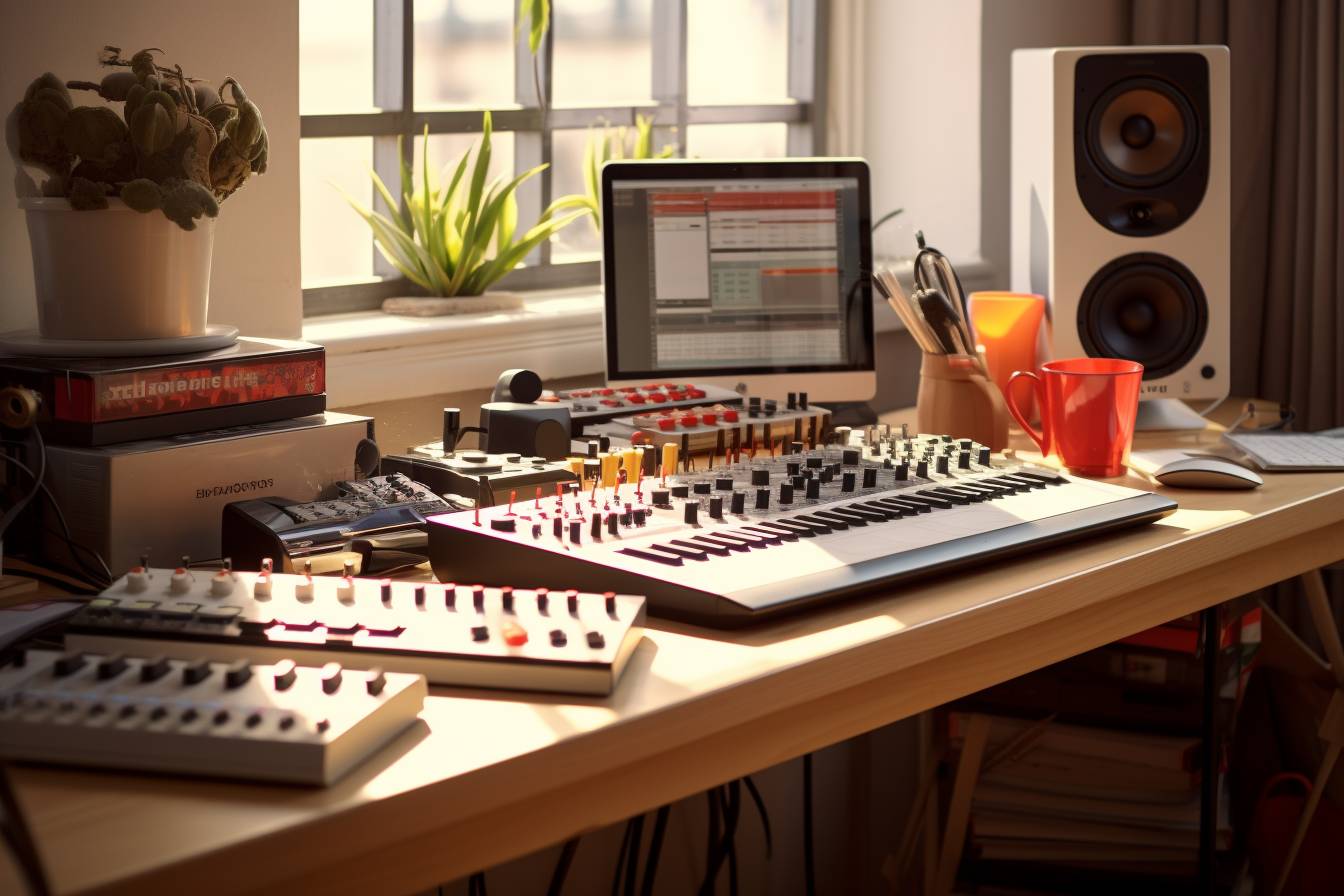

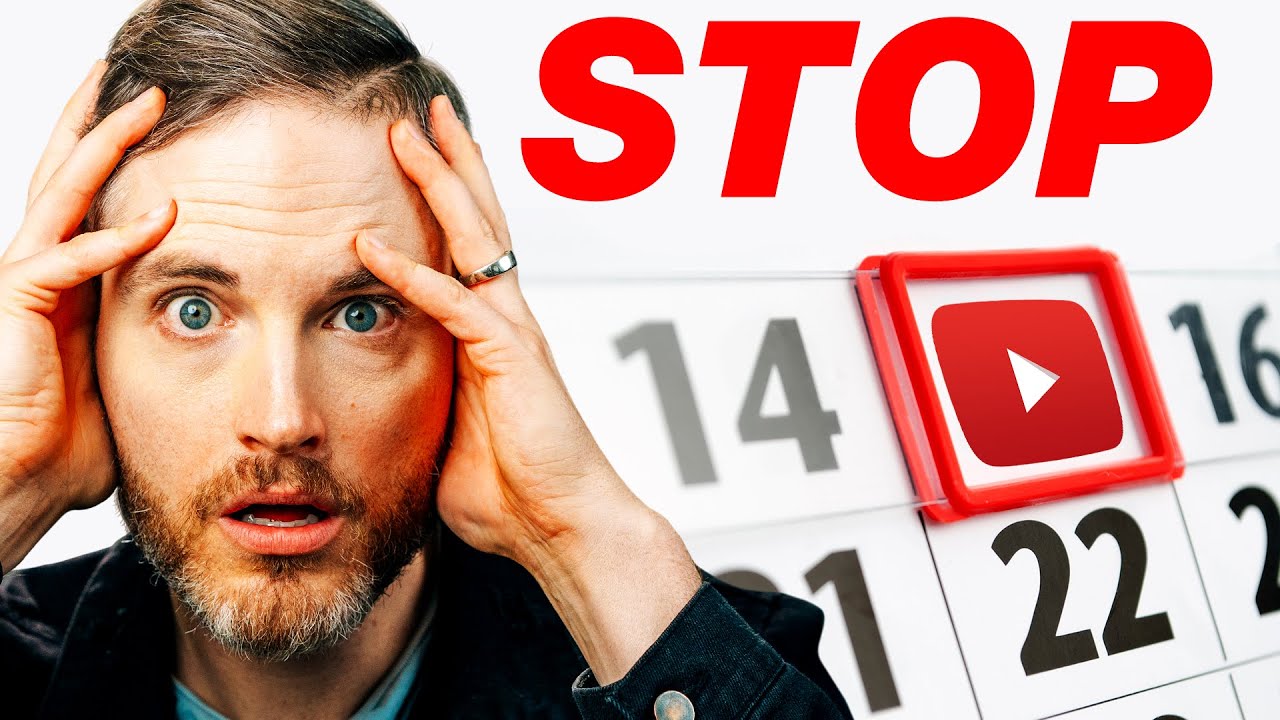 Think Media
Think Media
Sources for YouTube Copyright-free Music and Sound Effects
Independent Artists and Creators
Independent artists and creators offer a diverse range of copyright-free music and sound effects that YouTube creators can use in their videos. These artists typically provide their work under Creative Commons licenses, which allow you to use the content as long as you follow the specific attribution and usage requirements.
- 11% of YouTube creators use independent musicians' content for their videos .
- The average monthly earning of the top independent musicians on YouTube is over $1,000 .
Independent musicians perform live to create unique music for YouTube creators.
| Top Independent Music Artists on YouTube | Average Monthly Earnings |
|---|---|
| Artist 1 | $1,500 |
| Artist 2 | $1,400 |
| Artist 3 | $1,300 |
| Artist 4 | $1,200 |
| Artist 5 | $1,100 |
- Kevin MacLeod
- NCS (No Copyright Sounds)
- Audio Library – Music for Content Creators
Do's:
- Always credit the artist and provide a link to their website/social media.
- Follow any specific usage requirements specified by the artist or in the Creative Commons license.
- Check if the music you are using allows for monetization if you plan to earn revenue from your video.
Don'ts:
- Don't claim the music as your own or redistribute it without permission.
- Don't use the music in a harmful or offensive manner.
- Do not assume you can use all the music from an artist without checking each track for usage rights.
The percentage of YouTube creators using independent artists and creators' music compared to stock music from various platforms.
Supporting Links
The video editing software for YouTube can help incorporate these independent artists' copyright-free music and sound effects into your videos seamlessly.
Music Subscription Services
In this section, we will discuss various music subscription services that offer copyright-free music and sound effects for YouTube creators. These services provide access to a vast library of songs and effects, which are essential for content creators looking to enhance their videos and avoid YouTube copyright strikes.
- 90% of the top-performing videos on YouTube use background music to create a professional and polished feel.
- Creators who use music subscription services can save time and effort by accessing a pre-vetted library without worrying about copyright infringement.
- The demand for high-quality, royalty-free music has grown significantly in recent years, with creators seeking diverse options for their videos.
Popular Music Subscription Services
- Epidemic Sound: With over 32,000 tracks and 60,000 sound effects, this service appeals to creators across various genres. They offer a 30-day free trial and different pricing plans based on your needs.
- Artlist: Known for its high-quality music selection, Artlist provides subscribers with unlimited access to its extensive catalog. They offer a yearly subscription plan with a 14-day money-back guarantee.
- AudioJungle: Part of the Envato Market, AudioJungle offers thousands of royalty-free music tracks and sound effects. They have pay-per-use and subscription pricing options.
- Soundsnap: This service focuses on sound effects, offering a library of over 360,000 sounds to enhance your videos. They offer several pricing plans depending on your usage needs.
DO
- Choose a reliable and reputable service for your music needs.
- Ensure that the tracks and sound effects you use are copyright-free.
- Check the service's licensing terms to confirm that you can use the content in your YouTube videos.
- Regularly update your music choices to keep your videos fresh and engaging.
DON'T
- Use copyrighted music without proper permission, as it could result in a copyright strike.
- Rely solely on free music resources, as they may have limited selection and quality.
- Forget to give proper attribution (if required) when you use a track or sound effect.
By utilizing music subscription services, YouTube creators can access an extensive library of royalty-free music and sound effects. This not only helps in avoiding copyright issues but also elevating the overall quality of your videos. For more tips on how to make YouTube videos, check out our other resources, and keep creating!
Royalty-free sound effects websites
When creating YouTube content, it is essential to use copyright-free music and sound effects to avoid any legal issues or potential YouTube copyright strikes. In this section, we will explore various sources for royalty-free sound effects and copyright-free music available for your videos.
Audio quality is critical in making videos more professional and engaging. Here are some vital statistics to keep in mind:
- 79% of viewers will leave a video with poor audio quality within the first 5 minutes.
- Sound quality has a greater impact on the user experience than video quality.
- Audio content accounts for 50% of the overall quality of a video.
Top royalty-free sound effects websites
Finding the perfect sounds and music for your videos can be tricky, but here are five popular websites to get you started:
-
Casey Neistat uses music to create an energetic and engaging atmosphere in his vlogs.
-
Marques Brownlee (MKBHD) uses various sound effects to emphasize the key points in his tech reviews.
Do's:
- Make sure to read the licensing terms and conditions before using any sound effects or music.
- Use high-quality audio files for a better user experience.
- Tailor the sound effects to fit the theme and mood of your video.
- Combine various sound effects to create unique audio experiences.
Don'ts:
- Don't use copyrighted material without permission.
- Don't use sounds that are too loud or annoying, as they might distract from your message.
- Don't rely solely on sound effects – remember to have clear and audible dialogue.
Using royalty-free sound effects and copyright-free music can elevate the quality and engagement of your YouTube videos. By choosing the right sounds, adhering to licensing terms, and keeping your audio balanced, you can produce high-quality content that resonates with your audience. To further enhance your YouTube creations, consider checking out best tools for YouTube creators, among other resources available.
Overview
The YouTube Audio Library is a valuable resource for creators in need of royalty-free music and sound effects for their videos. With an extensive collection of tracks and effects available for download, it is essential for creators to understand its benefits and functionalities to keep their content engaging and copyright compliant.
available Audio Files in the Audio Library
The YouTube Audio Library offers creators a vast array of music and sound effects to choose from to enhance their videos in various ways. As of 2021, the library contains:
- Over 3,000 royalty-free music tracks.
- Over 6,000 high-quality sound effects.
- Multiple genres, moods, and durations to suit diverse creative needs.
Creators can preview, download, and use these tracks in their videos without worrying about copyright strikes or infringements.
Categories and Filters
To simplify the search for the perfect track or effect, the YouTube Audio Library categorizes its audio files under the following filters:
- Genre: From electronic to classical, browse through different genres to find complementary music for your content.
- Mood: Whether motivational, sad, or anything in between, enhance the emotion in your video by selecting an appropriate mood.
- Instrument: Search for tracks focusing on specific instruments like piano, drums, or guitar.
- Duration: Find the right length of music to match your video's runtime by filtering through tracks according to their duration.
- Attribution: Choose between tracks that require attribution (credits to the artist) and those that don't to satisfy legal requirements and show support to creators.
Usage and Attribution
While most of the tracks and sound effects available in the YouTube Audio Library are royalty-free and can be used without any restrictions, some may require proper attribution. Creators must adhere to these guidelines to avoid YouTube copyright strikes. It is crucial always to check the attribution information under each track or sound effect before using it in your videos.
Easy Integration with Video Editing Software
The audio files in the YouTube Audio Library are available in high-quality, industry-standard formats (MP3 for music and WAV for sound effects). This ensures compatibility with almost all major video editing software for YouTube and allows for seamless integration into creators' workflows.
Utilizing the wide range of royalty-free music and sound effects from the YouTube Audio Library can greatly enhance your video content and avoid potential copyright issues. Remember to explore different categories, follow proper attribution guidelines, and integrate the audio files with your preferred video editing software for the best results.
To further improve your YouTube content and stay updated with industry news, consider subscribing to websites for YouTube creators.
Looking for Brand Deals or Channel Strategy?
We run a platform for brand deals and an agency, helping creators derive maximum value from their content, while offering brands access to unparalleled, best-in-class research.
For Creators
- Strategic Brand Connections
- Outreach to Old Sponsors
- Platform to Manage Brand Deals
- View-Based Contract Negotiation
- Comprehensive Channel Strategy
- Channel/Thumbnail Optimization
For Brands
- Tools to Shortlist Creators
- Targeted Creator Outreach
- Detailed Sponsorship Reports on Existing Brands
- Platform to Manage Creator Deals
- View-Based Deal Facilitation
For Creators
- Strategic Brand Connections
- Outreach to Old Sponsors
- Platform to Manage Brand Deals
- View-Based Contract Negotiation
- Comprehensive Channel Strategy
- Channel/Thumbnail Optimization
For Brands
- Tools to Shortlist Creators
- Targeted Creator Outreach
- Detailed Sponsorship Reports on Existing Brands
- Platform to Manage Creator Deals
- View-Based Deal Facilitation
Apply to work with us or email [email protected]

Table of Contents
Work with us